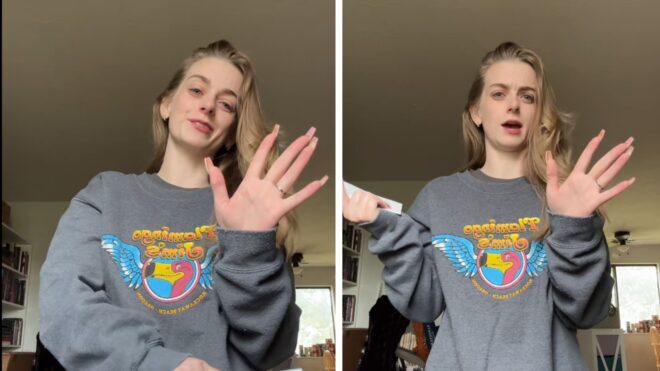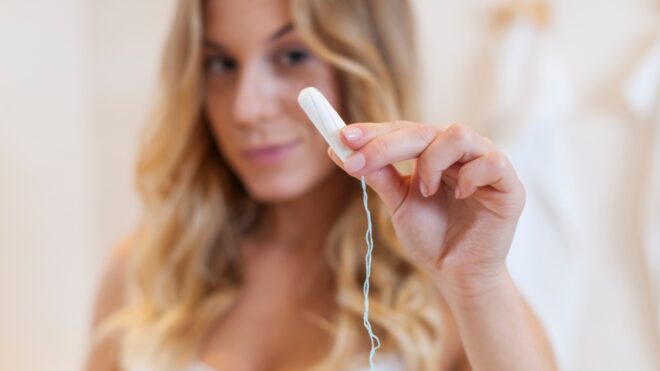
Thanks to the body-positivity movement, self-love is slowly becoming the norm. But it's harder to put into practice than it seems — especially when many celebrities and influencers all boast the same figure. It's like body types go in and out of style like pairs of jeans, and the ones calling the shots are out of touch with society.
Unless you're a Kardashian or an Instagram influencer, you're stuck with the body you were born with. Wouldn't it be a lot easier if we could all just accept that and appreciate our bodies as they are? That's the point that fitness guru Cassey Ho decided to address with the help of Photoshop and some powerful words. And let me tell you, it definitely puts things into perspective.
Cassey Ho, the fitness blogger behind Blogilates, posted a powerful new Instagram post pointing out the danger in treating our bodies like fashion statements.
In a series of digitally altered photos, she shows what she would look like with the "perfect body" throughout history — from 1400 to today.
The series of photos begins with 2018: the year of the small waist and big butt. "There is a huge surge in plastic surgery for butt implants, thanks to Instagram models posting 'belfies,'" she writes. She adds that even plastic surgeons "have become IG-famous" for reshaping women's bodies, and that butt implants and injections rose 58 percent between 2012 and 2014. Ugh.
Practically all of the Kardashians have fallen victim to the supposed "perfect" body in the 2010s, as well as most Instagram models. Whether through surgery or constant digital alterations, this body type is taking over pop culture as we know it today.
In the mid 1990s to 2000s, big boobs, flat stomachs, and thighs gaps were "in." As she puts it, "it's the age of the Victoria's Secret Angel." Breast augmentations were the most performed cosmetic surgery in the U.S. in 2010.
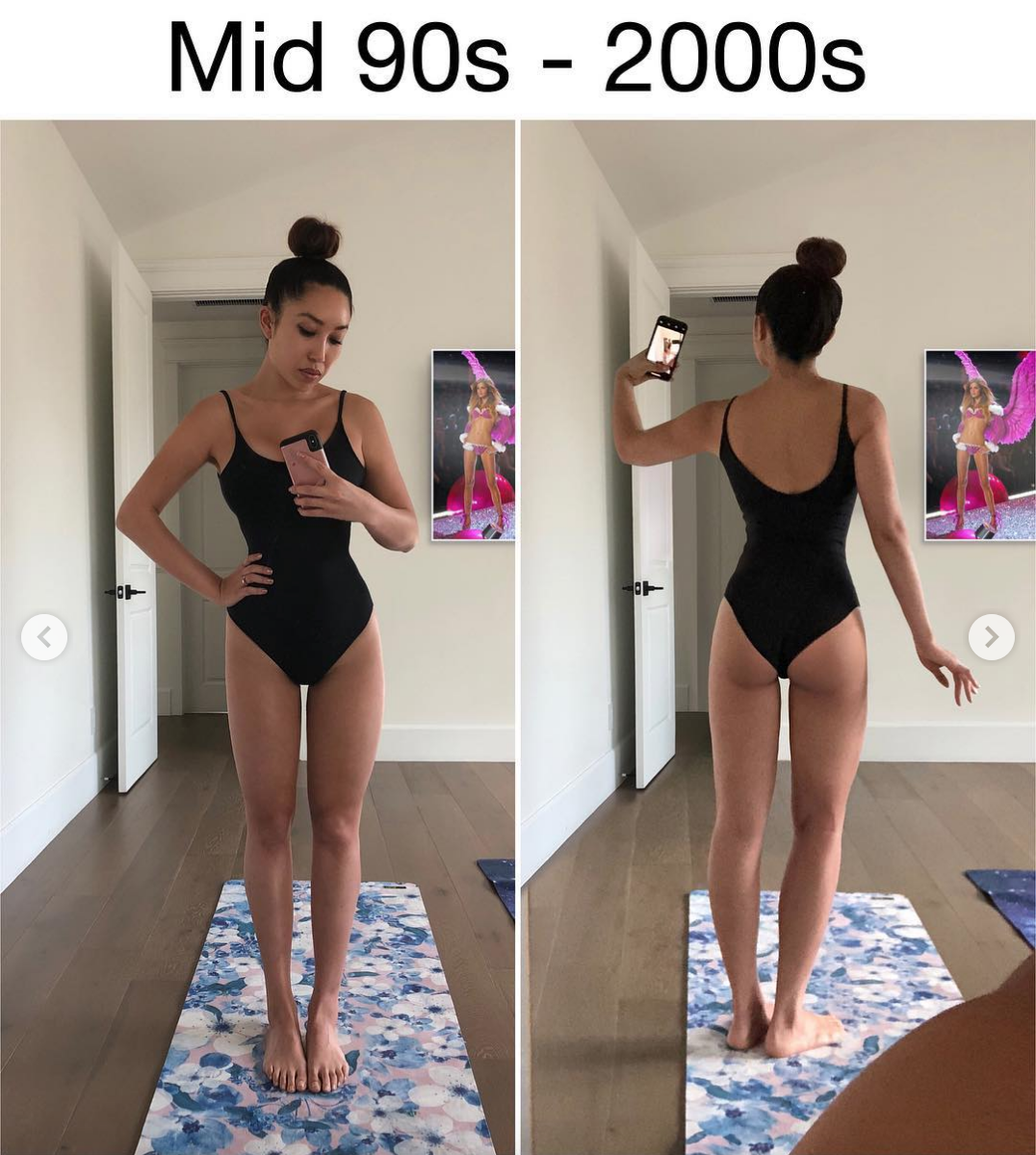
The "perfect body" of the early '90s was emaciated, extreme skinny. "Having angular bone structure, looking emaciated, and super skinny is what’s dominating the runways and the magazine covers. There’s even a name for it: 'heroin chic,'" she writes in the caption.
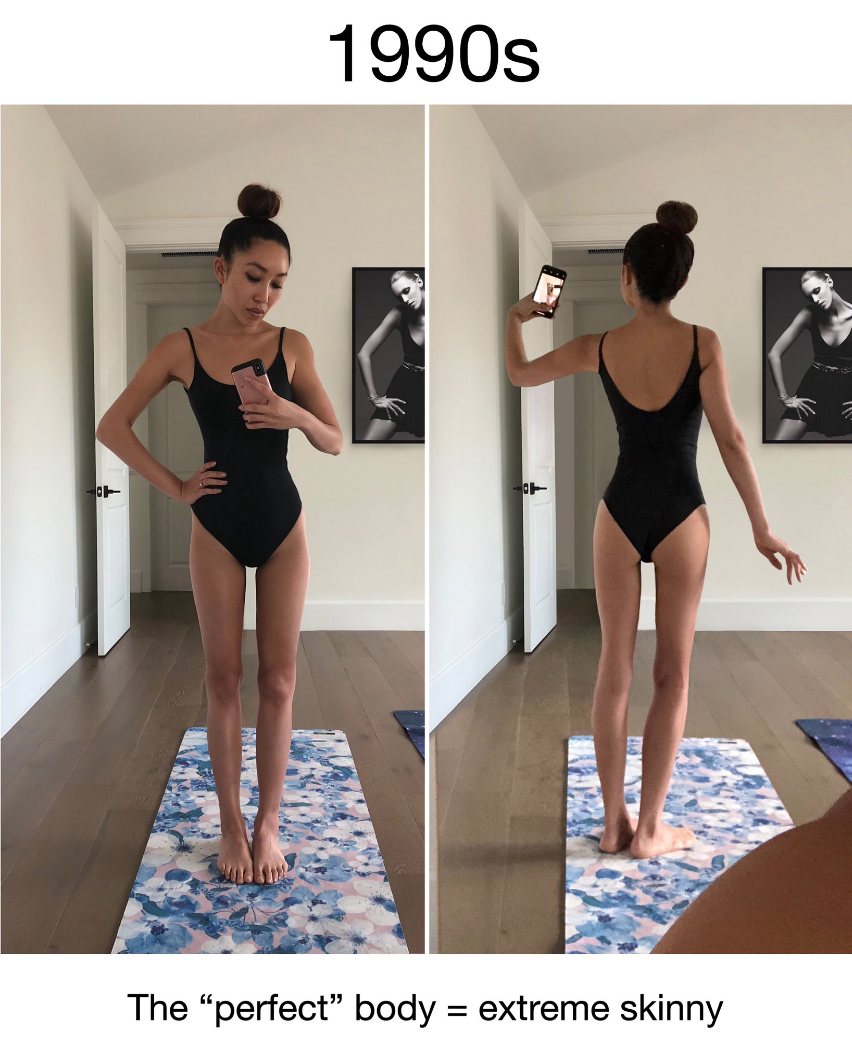
Next up she takes on the 1950s, which was known as the era of the hourglass figure. "Elizabeth Taylor's 36-21-36 measurements are the ideal. Marilyn Monroe’s soft voluptuousness is lusted after," she says. "Women are advertiseing weight gaining pills to fill themselves out. Playboy magazine and Barbie are created in this decade."
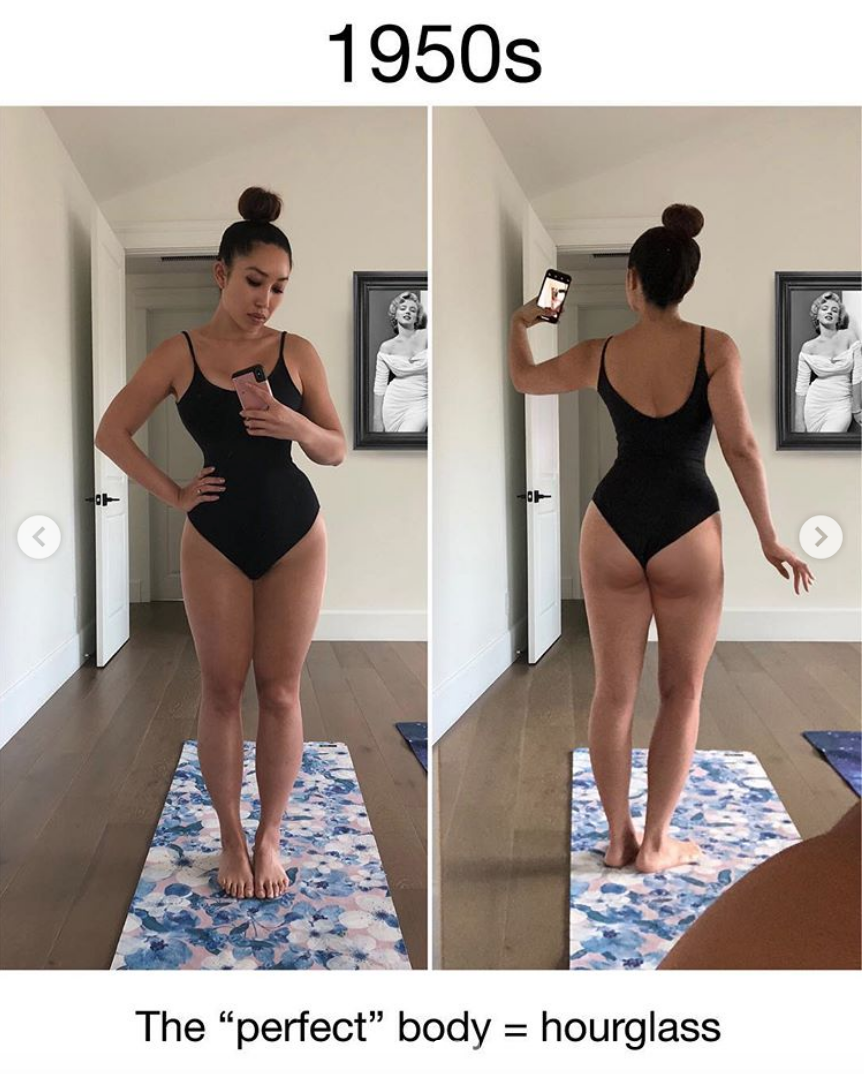
In the 1920s, boyish, androgynous, and youthful bodies are "in." Women chose to "hide their curves" by "binding their chests with strips of cloth" to maintain a "straight figure suitable for flapper dresses," she writes.
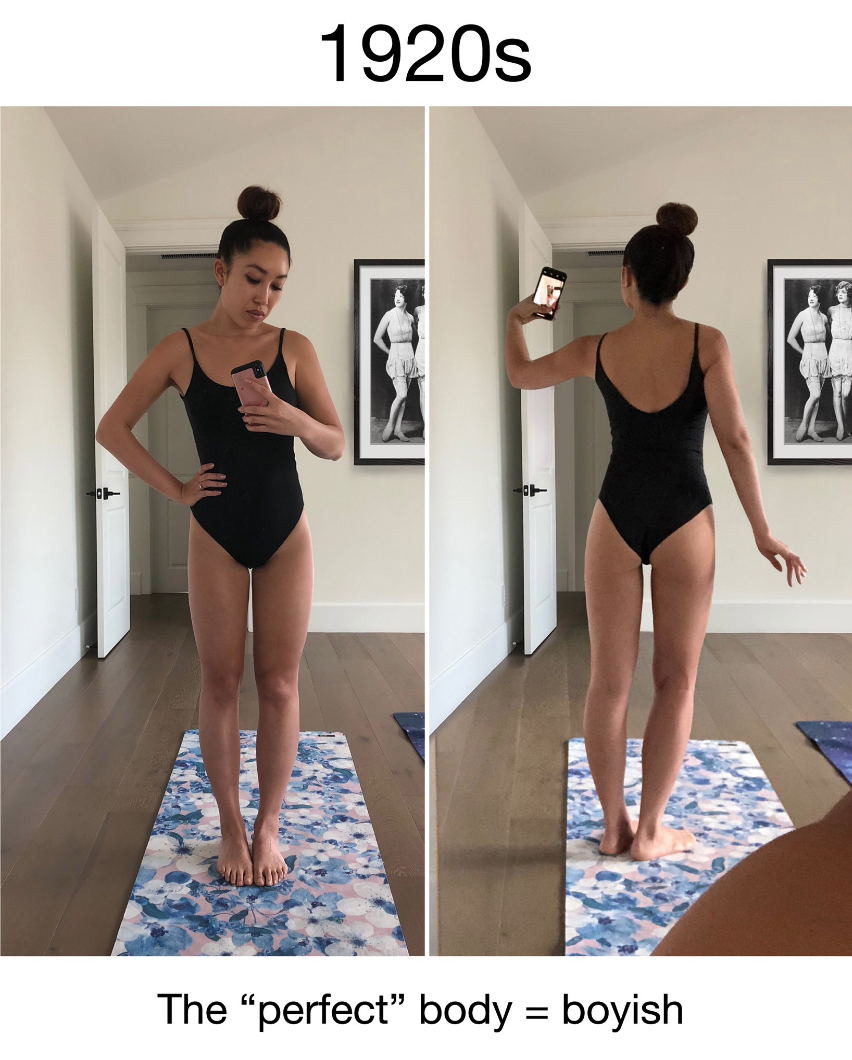
And finally, she addresses the Italian Renaissance — between 1400 and 1700 — where full-figured bodies were seen as ideal. "Looking full with a rounded stomach, large hips, and an ample bosom is in. Being well-fed is a sign of wealth and status. Only the poor are thin," she writes.

So what's the point of all this Photoshop madness? Ho wanted to illustrate the danger of treating our bodies like we treat our clothes: "in" one day, "out" the next.
"Why do we treat our bodies like we treat fashion? ‘Boobs are out! Butts are in!’ Well, the reality is, manufacturing our bodies is a lot more dangerous than manufacturing clothes," Ho writes on IG. "Stop throwing your body out like it’s fast fashion."
Her followers are feeling inspired and grateful to Ho for making such a powerful statement about body image. It's something we all could stand to hear.
Every body is unique, and society's idea of what's "in" will forever change. Instead of keeping up with the trends, we could do something much more empowering: accept ourselves. "Please treat your body with love & respect and do not succumb to the beauty standard. Embrace your body because it is YOUR own perfect body," she concludes. Can I get an amen?
In the era of body positivity, let's stop succumbing to societal pressures to appear "perfect." Embrace your body as it is, y'all. You are beautifully made.


